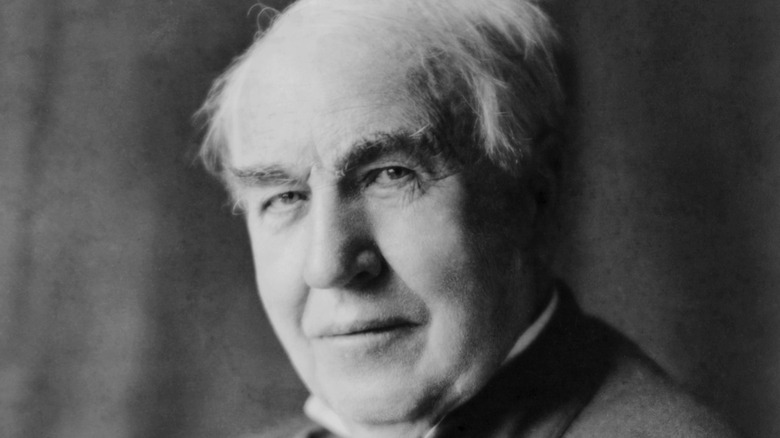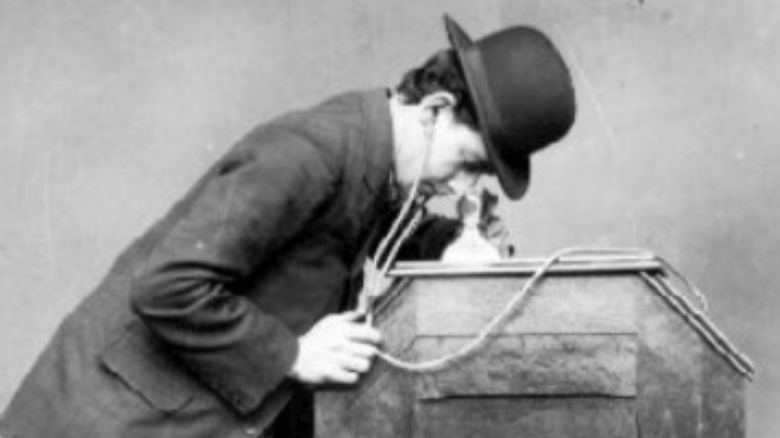The Truth About Thomas Edison's Failed Kinetophone
"If at first you don't succeed, try, try again." It's a mantra you probably heard from your parents, your coaches, your teachers, and other people in your life who encourage you to not be deterred by failure. And while it may seem like a platitude, it's a bit of advice that's been followed by great men and women throughout history.
For example, prolific American inventor Thomas Edison, or someone who worked for him, almost certainly played a role in the invention and/or improvement of some of the tools you use today — the electric light bulb, for one. However, as Thought Co. reports, Edison failed at several inventions, including a vote-counting machine that never took off, and an early attempt at a talking doll.
Another of Edison's failed inventions was an early attempt at the process we now call motion pictures. Building on earlier work involving photographs shown in sequence to produce the illusion of moving pictures, Edison invented a machine called the kinetophone that would allow users to see a "movie" and hear a soundtrack. However, the entire setup was awkward, clunky and uncomfortable, and it never took off.
The kinetophone was just too awkward to work
Nowadays when you enjoy a movie, if you're not watching it on your TV, computer, or mobile device, you're probably watching it on a big screen in a theater, while a projector shines the image onto a screen. That's the way it worked for decades.
Edison, however, seemed to think that people would prefer to enjoy movies by standing, bending over at a weird angle, and staring into a box. As the Library of Congress notes, the kinetoscope provided that very experience, forcing the user to stare into the machine while turning a crank, which flipped through a series of sequential photographs, creating the illusion of movement.
Though crude, it undoubtedly amazed the people of the late 1800s, when it was invented. Edison then added a layer of sound to the equation, producing the kinetophone (pictured above) which, in addition to providing motion pictures, also gave the users a soundtrack, of a sort. The device caught some attention when it was released in 1895, but that quickly died out, says the Library of Congress. A different apparatus to synchronize sound with projected images was marketed in 1913, but two years and 19 "talkies" (of a sort) later, Edison got out of the kinetophone business.

